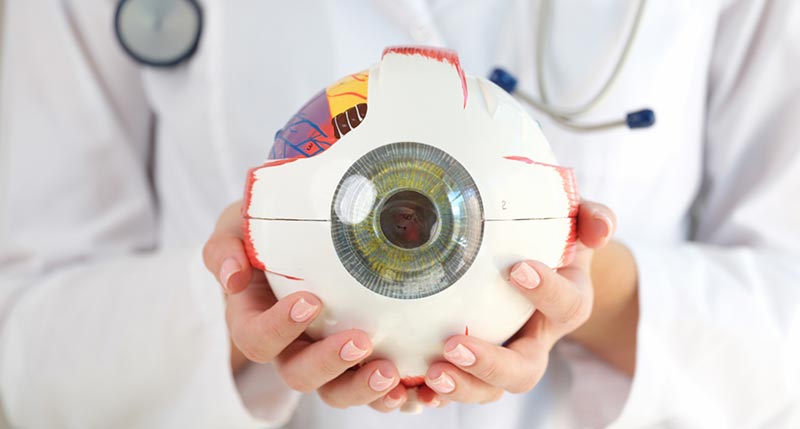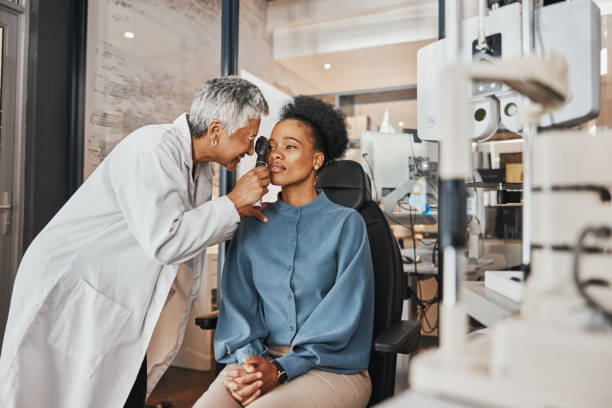The Comprehensive Eye Exam: What to Anticipate Throughout Your Visit to the Eye Physician
A see to the eye doctor for an extensive eye test is greater than a routine examination; it is a vital action in safeguarding your visual health. From the initial conversation of your case history to the accuracy of the visual acuity examination, each part of the exam offers a certain objective. What precisely happens during the eye health evaluation, and how does it affect the prescription procedure? Recognizing these aspects is important for those who desire to preserve optimal sight. As we check out each element, the importance of follow-up recommendations will certainly also end up being clear.
First Consultation
The first appointment during an eye test works as an important structure for recognizing a person's visual health requirements. This stage establishes the tone for the entire exam process, enabling the optometrist to gather crucial details about the client's case history, lifestyle, and certain vision worries. By carefully reviewing any type of pre-existing problems, drugs, or previous surgical procedures, the eye care expert can customize the examination to attend to specific requirements successfully.

Furthermore, the initial examination is an opportunity for people to articulate any kind of concerns or issues, fostering a collective partnership with their medical care company. This interaction not only makes sure that the individual feels informed and comfortable but also encourages them to take part proactively in their eye health and wellness administration. Jointly, these discussions allow the optometrist to devise an individualized evaluation strategy, ensuring ideal care and precise diagnosis.
Aesthetic Acuity Examination
Beginning the core components of an eye evaluation, the aesthetic acuity examination is developed to examine the intensity and quality of a patient's vision. This critical assessment assists determine exactly how well an individual can determine letters or signs at a standard distance, commonly using a Snellen chart (Opticore Optometry). The chart makes up rows of letters that reduce in dimension from top to bottom, with the person positioned at a customary range of 20 feet
During the examination, the person is asked to cover one eye and review out loud the tiniest line of letters they can see plainly. This process is repeated for the various other eye. The results are recorded as a fraction, with 20/20 vision showing normal aesthetic acuity-- where the individual can see at 20 feet what an individual with regular vision can see at that distance.
The visual skill examination additionally identifies prospective refractive mistakes such as hyperopia, astigmatism, or myopia, which might necessitate restorative lenses. By developing a baseline of aesthetic efficiency, the examination is a vital analysis device that assists the eye treatment expert in creating an ideal treatment plan tailored to the person's one-of-a-kind visual demands.
Eye Wellness Analysis
Adhering to the aesthetic acuity examination, a comprehensive eye health assessment is carried out to make certain the total health of the eyes. This crucial section of the eye examination involves a detailed analysis of both the outside and inner frameworks of the eye. The ophthalmologist or optometrist starts by taking a look at the eyelids, cornea, conjunctiva, and sclera for any type of indicators of infection, swelling, or problems. Utilizing specific devices like a slit lamp, the specialist gains a multiplied view of the eye's composition, making it possible for thorough assessment.
Next, focus shifts to the inner structures. Via the usage of ophthalmoscopy or fundus photography, the retina, optic nerve, and blood vessels are diligently examined. This action is vital for recognizing problems such as retinal detachment, glaucoma, or diabetic person retinopathy. In a lot of cases, pupil expansion is carried out to improve visibility of the internal eye frameworks, although this might result in momentary light sensitivity for the person.
Furthermore, intraocular pressure is gauged to screen for glaucoma danger. This is commonly done utilizing tonometry, which can discover raised pressure degrees that may recommend prospective damages to the optic nerve. Jointly, these evaluations create a detailed analysis to maintain eye wellness.
Refraction and Prescription
Refraction is an innovative treatment performed by eye care professionals to figure out the exact lens power required to remedy refractive mistakes such as nearsightedness, hyperopia, astigmatism, and presbyopia. The objective of this procedure is to evaluate exactly how light bends as it passes via the eye, allowing the specialist to figure out whether restorative lenses are required for enhanced visual skill.
During the refraction procedure, the individual is asked to browse a phoropter, a gadget that contains various lenses. The practitioner will methodically change these lenses and ask the patient to compare clearness between choices up until the most effective feasible vision is accomplished. This treatment is vital in crafting an exact prescription that defines the ideal lens power for eyeglasses or contact lenses.
The prescription stemmed from this treatment not only enhances vision however also acts as a foundation for choosing suitable rehabilitative eyewear. It is important to ensure that prescriptions are on a regular basis updated, as view it adjustments in vision can occur over time, highlighting the significance of regular eye assessments. This precise interest to information assists maintain clear, comfortable vision in every day life.
Follow-Up Referrals

During a follow-up browse through, the eye physician will carry out a series of tests to review visual skill and check for any modifications in vision that could require an upgrade to the prescription. In addition, the follow-up supplies a possibility to review any discomfort or issues experienced with present glasses. Changes can be made to make certain comfort and effectiveness, whether with lens modification or structure adjustments.
For people with recurring conditions such as glaucoma, diabetes-related eye concerns, or macular deterioration, even more constant follow-ups might be needed. These consultations are crucial for taking care of and possibly slowing the development of eye illness. Sticking to these suggestions can significantly add to keeping aesthetic health and wellness and avoiding lasting difficulties.
Final Thought
The comprehensive eye test is an important process for maintaining aesthetic health and wellness, this contact form encompassing an in-depth evaluation of case history and vision problems. Trick components consist of the visual skill test, which evaluates vision clearness, and the eye health analysis, which analyzes the overall problem of the eyes. Refraction tests assist identify the specific lens prescription essential for optimal vision modification. Follow-up referrals provide guidance for continuous eye care, making sure that any type of prospective concerns are addressed quickly and properly.
A see to the eye doctor for a comprehensive eye examination is even more than a routine exam; it is a critical step in securing your visual health.Kicking off the core parts of an eye examination, the aesthetic skill test is developed to assess the intensity and clearness of an individual's vision.Complying with the visual skill test, a detailed eye health and wellness assessment is conducted to ensure the total well-being of the eyes. These brows through enable the eye care professional to monitor modifications in vision, update prescriptions, and assess the total wellness important site of the eyes. Secret components include the aesthetic acuity examination, which assesses eyesight clarity, and the eye wellness analysis, which analyzes the overall condition of the eyes.